
A collection of sights that caught my attention in France's second largest metropolitan area.
I got to Lyon through the alphabet of inscrutable paths of life. After the breakthrough of the covid dreariness, fed up with the global haphazard, I just keenly looked for a mighty new opportunity. The quest didn't materialize in Scotland, but I found valuable work in Slovakia. There, I met an inspiring person from Lyon, who kindly said to stop by if I am ever in France. I thanked her but didn't see myself travelling that way anytime soon. However, when my contract finished, the world was just as in turmoil as before; I was to move again. And out of all places, my next stop was Brittany, France. The zig-zag trail continues; Lyon, here I come!

Saint George's church and eponymous suspension bridge over the Saône river.
Lyon is at the junction of the rivers Rhône and Saône. But besides the waters, there's an impressive confluence of structures from the last ~ 2,000 years that got the city centre inscribed on the UNESCO World Heritage List. Walking through is like reading books of history in a captivating package.

Former stock exchange of Lyon from the 17th century, then rebuilt into a protestant temple in the early 19th.
Let's start at the western banks of Saône, where Lyon's 5th arrondissement features plenty of old structures.

Cathedral of Saint John the Baptist built between 1180 and 1476, above the roofs of Lyon's 5th arrondissement.

One of three Roman theatres in Lyon.
The main streets are full of shops, restaurants, and magnificent medieval facades.

The back alleys are calmer and still packed with appealing visuals.
But perhaps the most atmospheric are the small courtyards hidden behind them.

Walking westbound from the river leads to the Fourvière hill, crowned by a unique, late 19th-century basilica of Notre Dame de Fourvière.
While the west continues with hilly landscapes, the city's east side is pretty flat; Fourvière offers grand vistas that way. Let's go there next.

Crossing the Saône to the east takes us to the centre of Lyon, its 2nd arrondissement, a neighbourhood squeezed on the Presqu'île peninsula between the banks of the two rivers. Here are the most commercial streets, along with large squares often used for gatherings.

There's an eclectic set of buildings from the Romanesque, Renaissance and Baroque eras...

...up to contemporary pieces – most of those are at the peninsula's southern tip, which used to be an industrial district. But if there are any thundering noises these days, it is because of raves, not steam engines. Most factories made room for upscale flats, offices, hip cafes, and retail. It incorporates well into the city's unit.
The (literally) largest head-turner of the district is the humongous Confluence museum.


But whatever your fantasy is, it's fun to walk in.
Now, let's continue eastbound over the Rhône.

This area is also full of interesting streets...

...but notably, there's the central business district boasting Lyon's high-rises...
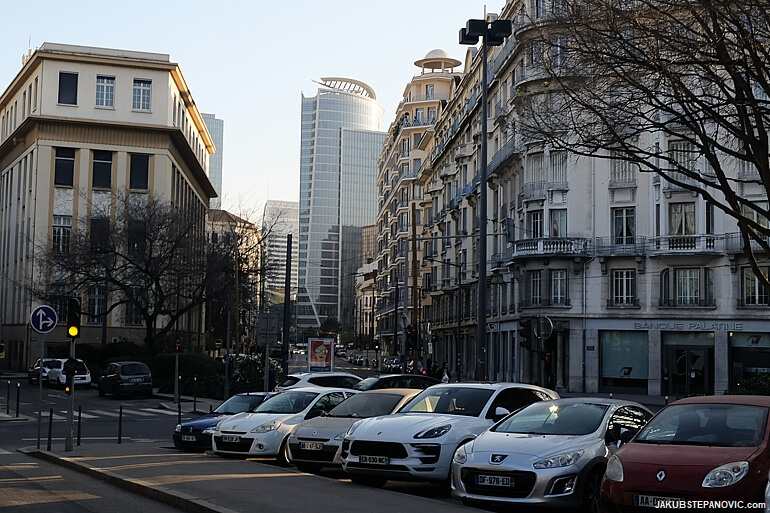
...and the vast Parc de la Tête d'or, that offsets the urban jungle with 117 hectares of greenery. It's an amazing place to come and relax.

I am a big fan of French parks for their flower gardens and areas to have picnics and chill. This one, in addition, includes a botanical garden accessible free of charge.
Services like this improve the city for the people who stay there, and Lyon does them well. Another one is its transit. The city is large (the metro area is home to over 2,2 million), but getting around is easy thanks to excellent public transportation; even better, the downtown is remarkably pedestrian and bicycle friendly. One can bypass congested streets when commuting and have a place to go for an after-work run or stroll.

Some people I spoke with in the past said that having a pedestrian-friendly city is a matter of history; if you have an old city, it's better to walk; if you have a modern city, it's better to drive. But that's nonsense. It is all by conscious decisions of the city leadership to make it one way or the other.
When they care only about cars, they make it worse for everyone. Lyon, however, seems to make a solid effort to make itself better for people. More and more, I think this tendency is just as essential as physical properties to form a positive impression of the place.
Interestingly, one could witness the positive transformation of Lyon in real time.

Some of Lyon's riverside areas are charming places to hang out. But it is not given.
The public area in the image below features trees, a fountain, and benches. But until the early 2000s, it was a huge parking lot, edged by a 6-lane road.
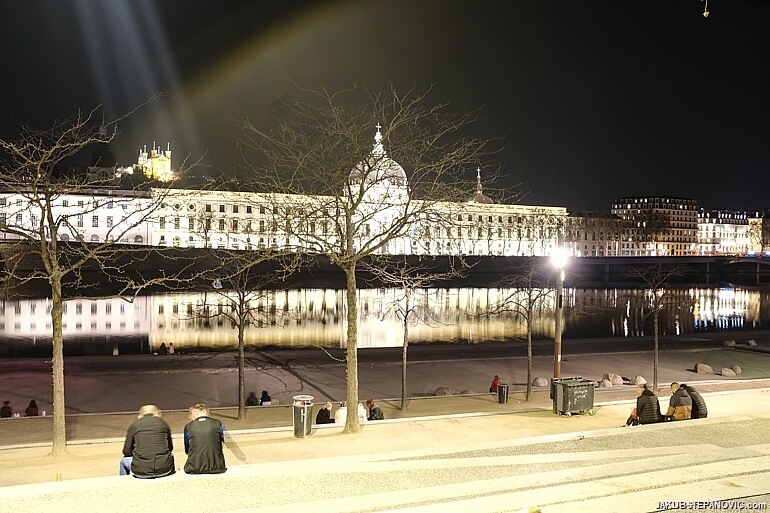
My snapshot doesn't make the location justice. It was during a cold, early-spring night, but I found it a nice place to be. The others in the photo apparently did too.
When I was there, it was hard to imagine that a spot with such a grand overlook of some of the city's landmarks used to be a park for cars; it begs to be a park for people. But when I went further from downtown, I noticed similar cases that weren't lucky to be converted yet.
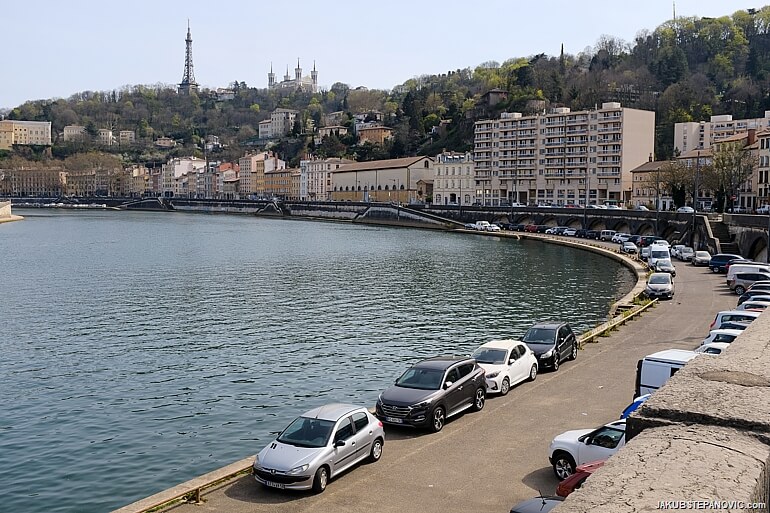
Note that nobody is hanging out in the area captured in this picture, even though I took it during a pleasing sunny day. I am not surprised. It is all by design.
Another area that reflects pedestrian-focused planning is the bridges.
There are plenty of them, so one doesn't need to take a big detour to get where they want. Also, nearly every other crossing is restricted to cars, making walking nicer. One of the newest additions, Pont Raymond Barre, even has benches to stop by and enjoy the view.

Pont Raymond Barre
I was also fortunate to try cycling in Lyon, and I found some fantastic paths to cycle on:

Delightfully, I felt the city's efforts while being on two wheels too. For most parts, cycling is a satisfying and safe experience. Many streets had painted bike lanes and adjusted signs, and there was already a decent network of separated cycling paths. Whether Lyon just redesigned old roads when it needed to resurface them or built new ones from scratch, they will get their money back.
Cycling took me further from the city centre, and I liked what I saw there too. Northeast is a canal with the 19th-century hydroelectric power plant Cusset. I found it fascinating because it used to be the most powerful hydroelectric power plant in the world, and its design was inspired by Vienna's Schönbrunn palace.

Not too far beyond the power station is Réservoir du Grand-Large, another superb recreation spot. And one can get there without sharing the road with cars. Cool!
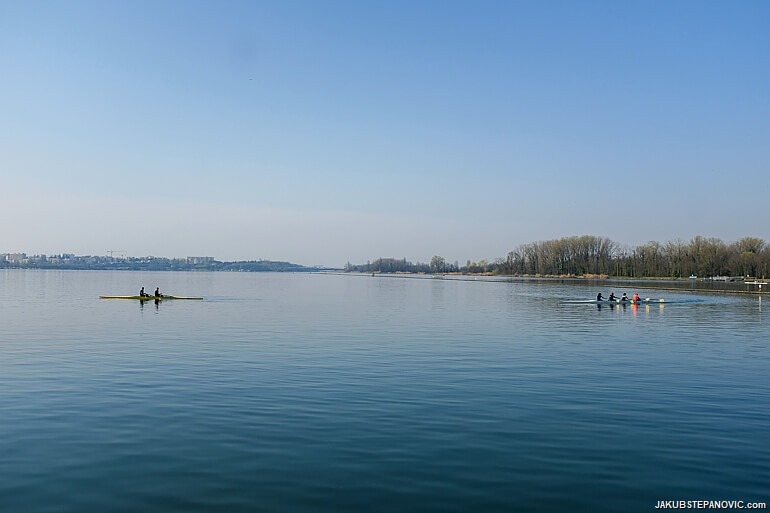
When I cycled the other way, southwest, I saw pretty, curved horizons.

...among which are remains of this wonderful aqueduct:

Sometimes, life just makes things happen, and I feel grateful that sometimes, they are pretty grand. Like my visit to Lyon was.
■ Browse my Blog Archives for more cities, topics and categories.
● Thanks for reading!







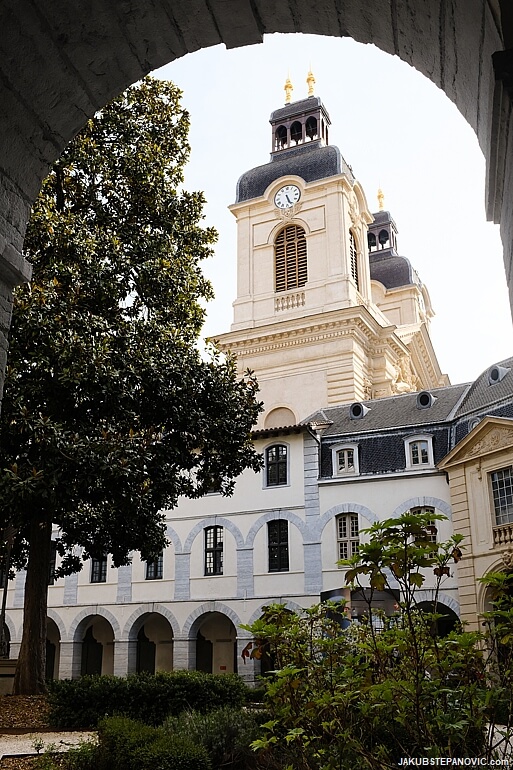
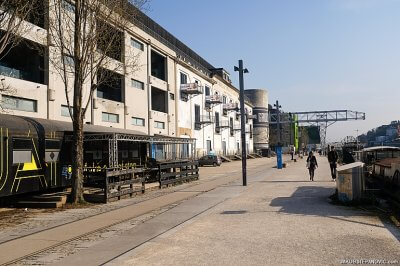












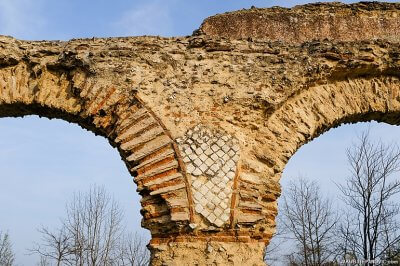








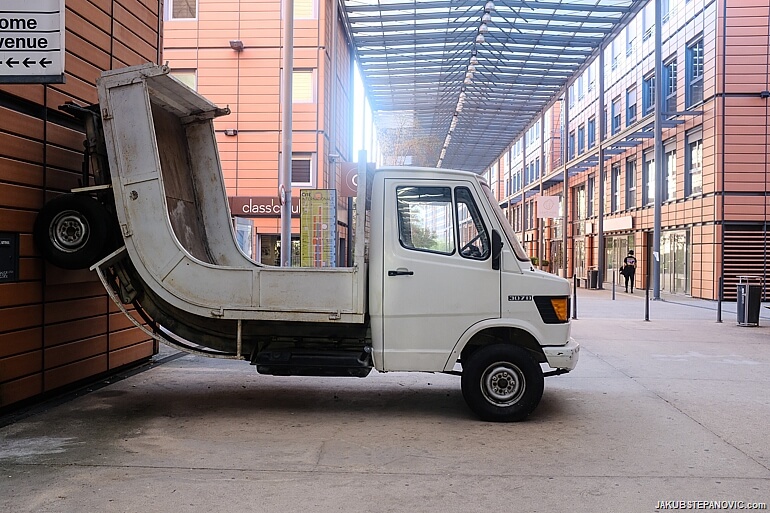
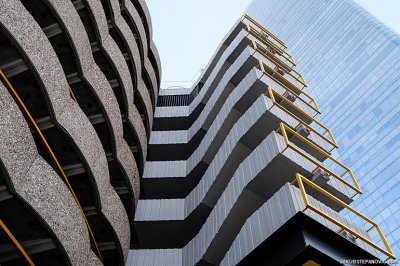








Comments are closed.